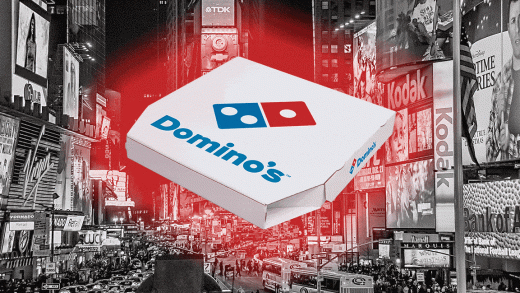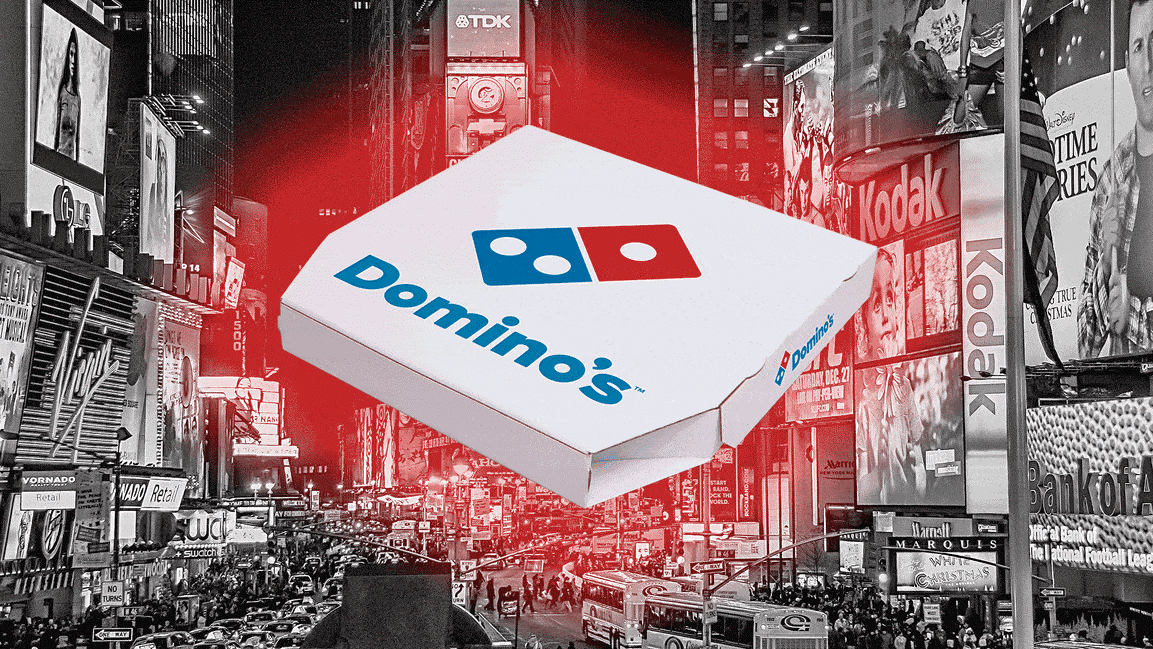Domino’s ‘Stranger Things’ app reveals the mind-flaying stakes of the attention arms race
Back in late 2020, Domino’s senior VP of brand and product innovation Kate Trumbull got a call from Netflix, asking if the pizza giant would be interested in a brand partnership around the fourth season of the hit show Stranger Things. For Trumbull, it was a no-brainer. She saw the symmetry between Domino’s ’80s popularity and the show’s setting, as well as a way to link the show’s supernatural vibe to her company’s tech and innovation. She’d also seen the hype around some the branded work tied to the show’s third season, like Nike’s Hawkins capsule collection, and Burger King’s Stranger Things meal.
She wanted to push it further.
“Where my mind went was, you can do small things, you can do gimmicky things, you can not take risks, or you can go all in,” Trumbull told me. “When we believe in an idea or concept, we want to go all in.”
That desire to go all in is directly tied to the audience it’s trying to attract. Domino’s target audience is a generation of consumers weaned on brand work that goes far beyond a 30-second ad or merch gimmick. Burger King’s “Subservient Chicken” site was in 2004. Nike Plus launched in 2006. “Their expectations are higher, they don’t want to be advertised to in obvious ways,” says Trumbull. “They want to do things that are unique and experiential, and that contributes to our desire to do something more.” That something more ended up being a year spent developing an app extension that allowed people to order pizza with their mind. Yeah, yeah, it’s really just facial recognition and eye-tracking tech, but still, this is a cool, fun way to tap into Eleven’s telekinetic abilities while also selling pizza.
It will be compelling to see how many fans use the Mind Ordering app, but what stands out about it is how it’s not only a funny, Stranger Things-themed gimmick, but it’s also a tool that the brand will no doubt find other uses for. It’ll be added to the already long list of ways—emoji, Slack, Messenger, zero-click—that Domino’s has enlisted to make ordering pizza both more convenient and more fun.
It’s also just the latest example—in the last week alone!—of how the fragmentation of pop culture and an accelerating news cycle has forced brands into bigger gimmicks, stunts, and beyond, in what is now seemingly a never-ending arms race for our attention.
Two major brands decided that the best way to cut through the clutter was to de-age sports superstars to star in ads as their younger selves. Mastercard cast both 2022 Lionel Messi and 2000 Lionel Messi in its newest ad, harking back to when a 13-year-old from Argentina first got on the plane to Barcelona on his way to becoming one of the greatest soccer stars of all time. VFX shop The Mill used AI-based neural rendering, which creates imagery based on thousands of photos, videos, and sound data of Messi’s likeness and movements.
Meanwhile, Michelob Ultra went long-form with McEnroe vs. McEnroe, an hour-long special on ESPN2 and ESPN Plus, pitting tennis legend John McEnroe on the court against five different variations of his past self. The special was created with interactive production studio Unit9, the same wizards that worked on Domino’s app. It used AI to study every single match of McEnroe’s career, while Unreal tech scanned McEnroe’s expressions and body movements, which were then synced up to robot arms in order to bring the digital into the physical world. (Thankfully, the beer brand didn’t extend its use of AI to revive his 2004 talk show.)
These are obviously pushing the envelope of both brand marketing budgets and our tolerance for what it produces, but then Cheez-It crackers dropped the proverbial hold-my-beer. A 2019 study from Switzerland’s Bern University of the Arts found that exposure to music during the aging process could impact the taste of cheese: that a cheese aged to the songs of A Tribe Called Quest, for example, had a “stronger smell and stronger, fruitier taste” than cheese aged to Led Zeppelin’s “Stairway to Heaven.” So the cracker brand partnered with Pandora to launch “Aged by Audio,” an edition of the crackers made with cheese aged to the sounds of A Tribe Called Quest, LL Cool J, Arrested Development, the Roots, Beastie Boys, Drake, Queen Latifah, Eminem, Snoop Dogg, Saweetie, and others. Whether a Beastie cracker tastes different than a Snoop one, or just the same cheesy cardboard of the original is hard to say. But the brand found a way to use culture and (somewhat questionable) science to distinguish itself from its competition on the shelf.
The challenge here for all these brands and their embrace of techno wizardry is whether the lifespan of any of this will even last beyond these few days. They’re already competing with Doja Cat and Dolly Parton hyping an upcoming musical on TikTok for Taco Bell’s Mexican Pizza, Nike’s 50th anniversary campaign, Marvel’s She-Hulk trailer, and whatever else pop culture has thrown at us. The goal posts are constantly moving, and now it appears that even though advertising has won the streaming wars, just how it conducts its battles is as fraught as ever. Going all in, as Trumball said, is now table stakes for attracting any meaningful attention beyond a fleeting smirk. And to be “all in” is to make something cool that includes its product with something else we love in order to infiltrate our attention. The Mind Flayer approach to marketing, maybe?
As the real Mind Flayer so nicely put it to Eleven in Stranger Things, “You let us in. And now you are going to have to let us stay. Don’t you see? All this time. we’ve been building it. We’ve been building it . . . for you.”
Fast Company , Read Full Story
(44)



